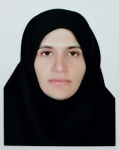| Authors | Maryam Mortazavi Mehrizi,Seyed Hamidreza Azami,Michael Wagreich,Mohamad Hosein Mahmudy Gharaie,Susanne Gier,R. Mark Leckie |
|---|
| Journal | Arabian Journal of Geosciences |
|---|
| Page number | 1-16 |
|---|
| Serial number | 14 |
|---|
| Volume number | 1032 |
|---|
| IF | 0.955 |
|---|
| Paper Type | Full Paper |
|---|
| Published At | 2021 |
|---|
| Journal Grade | ISI |
|---|
| Journal Type | Typographic |
|---|
| Journal Country | Iran, Islamic Republic Of |
|---|
| Journal Index | JCR،Scopus |
|---|
Abstract
Sedimentological and geochemical records are presented for an upper Paleocene to middle Eocene deep-water pelagic succession
of the Pabdeh Formation in the Paryab section, Zagros Mountains, NW, Iran. In this study, grain-size statistical parameters,
cumulative curves, and bivariate analysis on twenty-five sediment samples were used to decipher depositional processes and
paleoenvironments. XRD analysis of the fine-grained silt to clay sediments indicates that quartz, calcite, ankerite/dolomite, and
clay minerals such as illite, chlorite, and kaolinite constitute the main minerals within these sediments. Elemental and isotopic
chemostratigraphies are used to infer depositional conditions and sea level trends through time. TOC-CaCO3 trends of the
samples are used to interpret the type of deposition and sediment accumulation rates, rhythmic bedding, and identification of
regressional and transgressional phases. In the studied section, the manganese contents exhibit a declining trend along the
lowstand systems tract that terminates in a sea level lowstand and the subsequent start of a transgressive trend. Some geochemical
parameters such as Mn values and δ13C contents of sediments along a sequence can be used as potential sea level proxies that are
tested in this study. The Paleocene-Eocene Thermal Maximum (PETM) interval of the Pabdeh Formation coincides with
increasing Mn contents and Mn/Al ratios. Ti/Al and Si/Al ratios show contrasting trends to Mn values and Mn/Al ratios.
Generally, elemental and isotopic results of the Pabdeh Formation confirm the presence of a long-term three-stage sea level
cycle in the studied interval that is related to the PETM event. Based on elemental analyses such as Co, Mo, Ni, V, and Cr
contents, the Pabdeh Formation sediments were deposited in suboxic to slightly anoxic conditions.
Paper URL
